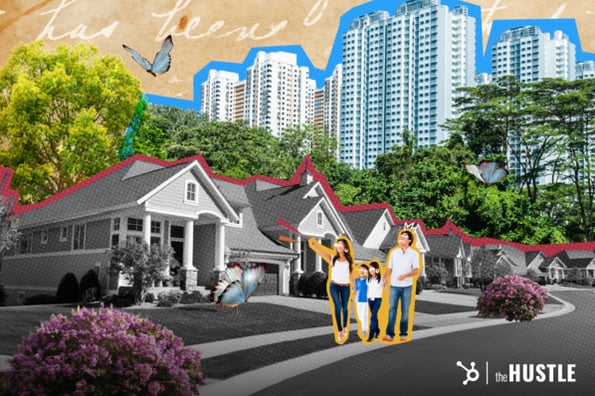Does it feel like your neighbors have been building their house forever?

It might not be all in your imagination: An average home takes around seven months to build, with more time tacked on for drawing up architectural plans and securing authorization.
With 1.6m new privately owned houses starting construction in 2021, that adds up to a massive amount of time spent waiting on homes to hit the market.
But there are some speedy new players entering the construction scene: 3D printing companies. Rather than using traditional construction methods (AKA hitting nails into wood planks), 3D printing construction companies are using the newest technology to print homes from the ground up.
And it’s not just about speed. 3D printing allows for drastically reduced building costs, labor needs, and lessens the negative environmental impacts. Because of the many improvements, the global 3D printing construction market is projected to reach $585.4B by 2030.
“There are several advantages [of 3D printing] that, when realized, could transform the construction industry,” says Narayanan Neithalath, a professor of sustainable engineering at Arizona State University.
One of the companies pioneering this new industry is SQ4D, a company printing concrete houses on-site to make building a home cheaper and faster.
SQ4D CTO Kristen Henry says part of what makes 3D printing so much faster is its lack of wait time. “The printer lays concrete at around a thousand inches per minute,” she says. “Unlike traditional construction, there’s no downtime. By the time the printer makes another lap, the material below has set and the layers can cure together.”
As far as lessening the price building, 3D printing drives costs down by minimizing the labor needed on a construction site. While a typical house takes ~20 workers to build, Henry says only two to four workers are needed to monitor a printing machine.
This method both slashes the price of labor and the cost of the materials themselves: 3D printing minimizes material waste (leftover paneling, sheet rock, or wood, for example) and uses concrete, which does not require additional siding to complete the structure.
Fewer workers on the job site also means increased safety in the construction industry. With 150k injuries on construction sites each year, having a machine do the heavy lifting (literally) and the high reaching can make a site much safer.
Minimizing the work done at the construction site even more drastically is Mighty Buildings, a startup using robotics to automate the 3D printing and construction process altogether.
Mighty Buildings, unlike some competitors in the industry, does its printing off-site in its warehouse. Scott Gebicke, the company’s CEO, says he believes creating modular homes off-site is greener, more efficient, and more scalable than printing directly onto a construction site.
The company’s automated system 3D-prints custom panels made from patented composite stone material based on each house’s specifications. The panels are then loaded onto a truck and quickly assembled on-site.
Gebicke points out another perk of autonomous building: The generations of craftsmen with hyper-specialized skills are phasing out of the workforce, leaving those buying centuries-old homes in trouble should they need specialized repairs.
He feels that 3D printing is the future of the industry and will be particularly well-received by younger generations, who prioritize functionality, price, and newness.
“We’ve gone from a society where everyone wants something custom to one where everyone wants what’s best,” says Gebicke. “Everyone is using the same type of phone, driving similar cars. I think housing will follow, especially for younger generations.”
While modular houses might offer less flexibility than a house built nail by nail, Mighty Homes still has a range of customization options that customers can choose from, including things like the height of the windows or the texture of the exterior walls.
Those walls are also made out of a patented composite stone material — not concrete — which the company says is four times as durable as concrete but 30% lighter, produces only 1% of the waste generated by traditional methods, and is ultimately striving to be carbon negative.
Icon, another player in the 3D construction space, uses a material it calls Lavacrete, a proprietary material resembling mortar that is mixed specifically to withstand extreme weather events, something that will become increasingly important as climate change worsens.
Having durable, weatherproofed homes is helpful not only in extreme weather conditions or tropical climates, but also keeps all homes more effectively insulated, lowering energy costs for heating and cooling.
While these startups are currently focused on making homes with a more luxurious touch, 3D printing will likely play an important role in solving the affordable housing crisis, both in the US and abroad.
The US housing market is coming up short by an estimated 6.5m homes, and even with construction bouncing back post-pandemic, it could take years to recover.
“Supply of homes is one of the main causes of the affordability problem we’re having today,” says Michael Harper, the director of business development at Icon. “We can’t build homes fast enough in today’s market, and the speed that we’re able to build homes should have a major impact on that.”













